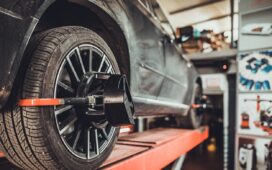With fuel costs remaining the largest operating expense for trucking companies, improving the fuel efficiency of their fleets with proper maintenance is vital. Optimized vehicles save on fuel and reduce breakdowns and repairs over the long haul.
Regular oil changes
Perhaps one of the simplest ways to maintain fuel economy is diligent oil and filter changes at scheduled intervals. Clean oil lubricates engines effectively and prevents wear. Use only manufacturer-recommended oils to avoid compromises. Document all oil change dates and miles to track.
Replace air filters
Clogged air filters lead to decreased air intake, forcing engines to work harder and burn more fuel. Replacing air filters approximately every 30,000 miles maintains proper airflow. Use gauges to check for restrictions during PM checks. Proper filters keep particles from damaging cylinders.
Monitor tire pressures
Under-inflated and over-inflated tires increase rolling resistance and fuel consumption. Check all tires at every stop with a high-quality commercial gauge. Look for uneven or excessive wear. Keep tires properly inflated to specs to minimize drag. Rotate at suggested intervals.
Align the wheels
Wheels out of alignment cause tire drag and reduced mileage. Have the alignment checked regularly and when new tires are installed. Optimizing alignment angles like camber, caster, and toe-in will improve rolling efficiency. Keeping loads balanced across axles also helps prevent misalignment.
Tune-ups and engine maintenance
Routine tune-ups keep engines operating at peak efficiency. Follow manufacturer guidelines on replacing spark plugs, wires, caps, and rotors. Check out this time https://www.deliveree.com/id/ well-tuned engines maximize fuel combustion. Fix leaks, tighten belts and hose connections. Clean fuel injectors and pumps.
Coach drivers on habits
- Accelerating gradually, no jackrabbit starts
- Avoiding excessive idling
- Maintaining steady speeds and safe following distances
- Coasting to stops instead of braking excessively
- Limiting acceleration and braking episodes
- Removing excess load weight
- Emphasize that safe driving and fuel efficiency go hand-in-hand.
Monitor mpg
Tracking fuel economy regularly identifies issues before they escalate. Sudden drops in MPG signify potential problems. Technology like electronic logs and telematics simplifies data capture. Reviewing MPG by driver provides accountability and coaching opportunities. Every tenth of an MPG improvement saves money. In the realm of real estate, identifying volume hot spots and understanding listing characteristics are pivotal for brokers. These insights empower strategic decisions encompassing office placements, recruitment of agents, allocation of advertising funds, and prioritizing referral partnerships, all tailored to specific geographic regions. The effectiveness of expenditure optimization hinges on a nuanced grasp of local market dynamics.
Reduce drag and rolling resistance
As vehicles move, forces like air resistance and tire friction sap momentum requiring more fuel to overcome. Strategies to streamline drug include:
- Keeping the top of cabs and trailers clean and aerodynamic
- Closing windows at highway speeds
- Operating at optimal road speed
- Removing unneeded racks, ladders, or add-ons
- Balancing loads to minimize weight shifts underway
- Inspecting brake drag
- Subtle adjustments cumulatively make MPG gains.
The principles are straightforward – well-maintained vehicles perform better over the long run. Applying maintenance practices maximizes fuel efficiency as part of optimizing fleet operations and profitability.













